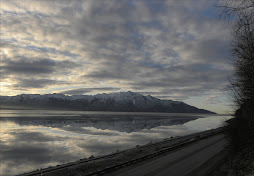
What minds had dreamed this place, had wandered in search of riches here, and kindled the flame of adventure in arriving in this valley? What manner of men had spent their light in beating back the insects and heat,climbing the hills to investigate?Had the beauty of glacial lakes or u-shaped valley curves gave pause to appreciate the land, or were their minds single in the lure of gold, the only color seen?
We that come later can only guess what was in their hearts, of some who knew the original place. Now roads of dusty past take a thousand people through, who only want a place to get away. Now we come to play and spend the day, well fed with food and drink, without the fear of struggle. The people are softer now, of a race that is supported by the past, who wander about for an hour or two and are gone. But the people who once came here were tough and resolute enough to carve a world from here. I see their ghosts on every hill...







